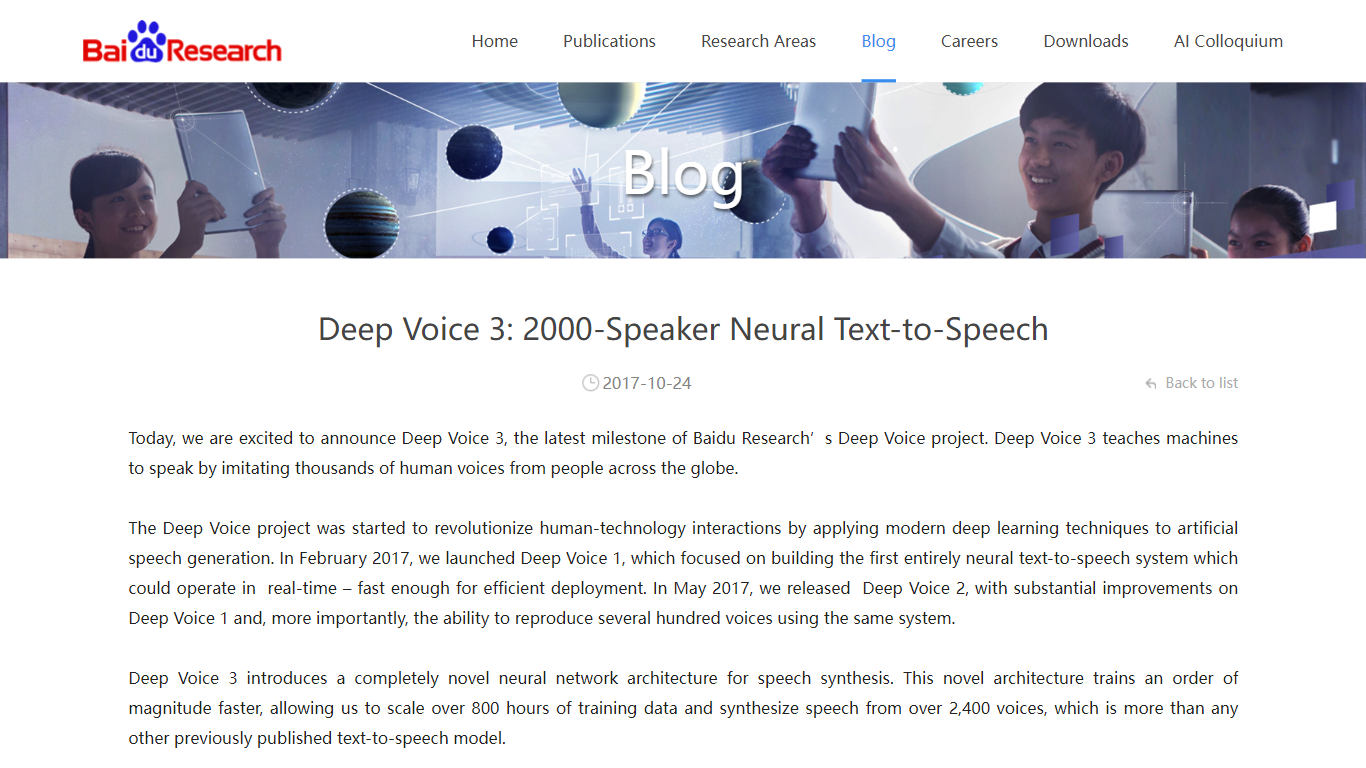
Last updated 11-01-2025
Category:
Reviews:
Join thousands of AI enthusiasts in the World of AI!
Deep Voice 3
Deep Voice 3 is an open source text-to-speech system that uses a fully convolutional neural network to convert text into natural-sounding speech. It supports both single-speaker and multi-speaker models, allowing it to generate speech in various voices and accents. The system is designed to scale efficiently, handling large datasets and training quickly compared to traditional TTS models.
The architecture includes an encoder that processes text inputs, an attention-based decoder that predicts mel-scale spectrograms, and a converter network that generates vocoder parameters for waveform synthesis. This design helps produce clear and natural speech with fewer mispronunciations. Deep Voice 3 also supports training on phoneme, character, or mixed inputs, which improves pronunciation accuracy.
Recent implementations have demonstrated the model's ability to synthesize speech from multiple speakers with distinct accents and ages, showcasing its versatility. Audio samples from various English accents, including Southern England and Scottish, highlight its adaptability to different speech styles.
Deep Voice 3 is suitable for developers and researchers interested in building scalable, high-quality TTS applications. Its open source nature allows customization and experimentation with different model configurations and datasets.
While the core technology remains consistent with the original design, ongoing community efforts focus on improving training efficiency and expanding multi-speaker capabilities. The system's modular structure facilitates integration with other speech processing tools and vocoders.
Overall, Deep Voice 3 offers a balance of speed, scalability, and speech quality, making it a valuable resource for those working on speech synthesis projects that require flexibility across voices and languages.
For detailed technical insights and implementation guidance, the original research paper and open source repositories provide comprehensive resources.
🎤 Multi-speaker support with varied accents and ages for diverse voices
⚡ Fast training speeds enabling quicker model development
🧩 Flexible input options using phonemes, characters, or both for better pronunciation
🔊 Generates mel-scale spectrograms for high-quality audio synthesis
🔧 Open source codebase allowing customization and integration
Supports multiple speakers with distinct accents and ages
Efficient training on large datasets for scalability
Flexible input formats improve pronunciation accuracy
Open source implementation encourages customization
Produces natural-sounding speech with fewer errors
Requires technical expertise to set up and train models
Limited official support beyond community resources
Audio quality depends on vocoder integration and dataset quality
Can Deep Voice 3 generate speech for multiple speakers?
Yes, Deep Voice 3 supports multi-speaker models that can synthesize speech in different voices, accents, and ages.
What input formats does Deep Voice 3 accept for text processing?
It can process phoneme-only, character-only, or mixed character-and-phoneme inputs to improve pronunciation accuracy.
Is Deep Voice 3 suitable for real-time speech synthesis?
While designed for efficient training and inference, real-time performance depends on hardware and vocoder integration.
Does Deep Voice 3 require large datasets for training?
It is optimized to scale with large datasets, but smaller datasets can be used with some trade-offs in quality.
Is the Deep Voice 3 codebase open source and customizable?
Yes, the implementation is open source, allowing developers to modify and adapt the system to their needs.
What languages and accents does Deep Voice 3 support?
The system has been demonstrated primarily with English accents, including Southern England and Scottish, but can be trained on other languages.
Where can I find audio samples of Deep Voice 3 in action?
Audio samples for single and multi-speaker models are available on the official implementation page showcasing different voices.
